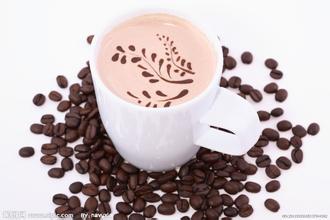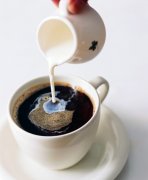Intellectuals and Cafe Culture General knowledge of Fine Coffee Culture

Although he did not enjoy the store's signature drink, the public coffee cafe is still famous for Lu Xun's many trips. Gongfen was located near the tram terminal on North Sichuan Road in Shanghai at that time, opposite the Neishan Bookstore. It must not be the earliest coffee shop in Shanghai, nor was it the best coffee shop in Shanghai at that time. However, it is because the Chinese left-wing Writers' Union has become what later generations call "the most famous coffee shop of that era."
Mr. Lu Xun once wrote in the Revolutionary Caf é: "the towering foreign building in front of Kuo Street, the doorway is a glittering glass signboard, upstairs are our celebrities in today's literary and art circles, either talking or meditating." in front is a large cup of steaming proletarian coffee, but it is really an ideal paradise. " But Lu Xun himself does not drink coffee, he drinks green tea alone, so "I have never been to such a coffee shop."
But a year after the Revolutionary Cafe was written, Lu Xun went to the Public Cafe, which was close to his residence in Shanghai at the time, in order to attend the party of the League of the left. He still doesn't drink coffee, just a cup of green tea, and then every time he goes there, he still needs only one cup of green tea. Wei Mengke, an old writer, recalled that in terms of "coffee or tea", Mr. Lu Xun did not have any Western habits. Everyone else asked for coffee, but he asked for tea, and sometimes Xia Yan accompanied him to drink tea. Although he did not enjoy the store's signature drink, the public coffee cafe is still famous for Lu Xun's many trips. Gongfen was located near the tram terminal on North Sichuan Road in Shanghai at that time, opposite the Neishan Bookstore. It must not be the earliest coffee shop in Shanghai, nor was it the best coffee shop in Shanghai at that time. However, it is because the Chinese left-wing Writers' Union has become what later generations call "the most famous coffee shop of that era."
Yang Xianru recalled: "in the 1930s, Comrade Yang Hansheng used to take us to the activities of Leftist writers at the Public Cafe on North Sichuan Road. This is a coffee shop run by foreigners, so it is safer to inquire about room bags on patrol. " In 1934, Xiao Jun and Xiao Hong came to Shanghai from the northeast with manuscripts of their novels. They first went to the Neishan Bookstore to meet Lu Xun, and then Lu Xun took them to have a chat with public coffee. Coincidentally, Zhou Yang's wife also recalled that Zhou Yang had asked Zhou Yang to wait in the public caffeine, first went to the Neishan bookstore to find Lu Xun, and then the three of them had a long talk over coffee and tea in the small private room on the second floor of the public coffee. It can be seen that the only way for the literary youth at that time to meet Lu Xun was the Neishan Bookstore-the Public Cafe Cafe.
In Japan, cafes also became popular among intellectuals and then among the general public by virtue of the cultural movement. On April 13, 1888, Japan's first coffee shop opened twice in Tokyo's Ueno Nishimen-cho (another said that the earliest coffee shop in Japan was the "washing Pavilion" opened in Tokyo's Nippon Bridge in 1886). The owner, Zheng Yongqing, also has a special relationship with China. He is the adopted son of Zheng Yongning, a descendant of Tian Chuan Qi Zuo Weimen, a younger brother of Zheng Chenggong. Born in Nagasaki in 1859, he studied at Yale University in the United States and is proficient in Chinese, English, French and Japanese. As a senior intellectual, Zheng Yongqing pursues to promote coffee as a kind of literati spirit. Taking the teahouse acceptable to the Japanese literati at that time as a signboard, he named his coffee shop "can you teahouse" and sold Westerners' coffee in it. The Japanese pronunciation of "can" is similar to that of "coffee", and later it even became a fixed translation of "coffee" in Japanese. As a beverage first liked by cultural people, coffee had a lot of literary translation at that time, including "can not", "bone non -", "bone happiness", "Jiaxi" and so on. Some people have named it "Tang Tea", "Xiangtang" and so on. Zheng Yung-ching also complied with this trend and put all kinds of books, newspapers and periodicals in his own coffee shop, even the four treasures of the study, in short, he strived to integrate the aroma of books and coffee. At that time, Japanese intellectuals also had many interesting hobbies when they went to cafes. For example, some people would bring geisha to cafes to accompany reading, while others, like Mr. Lu Xun, showed up frequently in cafes but never drank a cup of coffee. Because in the eyes of people at that time, it was important to sit in front of the high-back seat of the cafe, with a popular literary publication spread out on the table, and it didn't matter whether it was coffee, green tea or even boiled water.
Zheng Yongqing's "can not teahouse" eventually closed down quietly after four years of opening because of its high style, poor management and successive years of deficit. However, the coffee culture craze set off by "whether the teahouse" has led to the emergence of successors. In 1890, the Gem Coffee Shop in Asakusa, Tokyo, officially opened. In 1909, Caf é Paulista, the first generation of Brazilian immigrant Mizuno in Japan, got free coffee bean sponsorship from Brazil, thus opening chain stores all over Japan. The Tokyo branch, which was founded in 1911, still stands opposite the toy store of the Badingmu Museum in Ginza. At that time, the advertising slogan of this coffee shop was "hot coffee as black as ghosts, sweet as love, and hot as hell." and the coffee here is cheap and good, only 5 cents per cup, plus 5 cents, and you can get a doughnut. So it attracted many young scholars at that time and college students from nearby Keio University to stop here. It is said that Akita Yuki, a member of the Esperanto Popularization Society at that time, often bought only one cup of coffee but occupied 10 seats, and held a seminar here every week, which was praised as an example of being stingy.
When it first opened, the Old S ã o Paulo Cafe had a hostess department on the second floor. In 1911, Aoki, a women's magazine founded by Hirazuka Thunderbird, often held editorial meetings in the concierge department, where a group of fashionable and famous women gathered to talk and sat all afternoon. "Green Shock" is an 18th century British "Bluestockings" female literati, and blue socks later became a symbol of new women in Japan. Although today's "Old S ã o Paulo Cafe" has cancelled the hostess department, female guests in blue socks are still given special treatment and coffee money can be waived. I also heard that once Lennon and Yoko Ono stayed in Ginza and came here for three consecutive nights to order the shop's signature Paulista Old to drink. This kind of mixed coffee has been on the menu since its inception. Yoko Ono can be regarded as a new woman. I wonder if she went there wearing blue socks at that time.
Important Notice :
前街咖啡 FrontStreet Coffee has moved to new addredd:
FrontStreet Coffee Address: 315,Donghua East Road,GuangZhou
Tel:020 38364473
- Prev

How can you get a good cup of coffee on your journey?
At a time when instant coffee is popular, how can you get a good cup of coffee during your trip? There are three main points to drink good coffee: producing area, fresh grinding and ingredient technology. It is recommended to find a coffee shop that pays attention to quality and customer feelings; then look at the origin, the best coffee producing area in the world is in Brazil, the first brand is Iban, let the barista grind now, smell the pungent fragrance, people's thoughts enter the coffee.
- Next

Espresso (espresso) is the essence of coffee beans.
In terms of pure sensory entertainment, there are few experiences in daily life that can be comparable to a good cup of coffee. The charming fragrance of a cup of hot, smoking coffee just brewed from freshly roasted beans can pull sleeping people out of bed and lead passers-by into the cafe. There are millions of people around the world who are not caused by caffeine in their coffee for a while.
Related
- Beginners will see the "Coffee pull flower" guide!
- What is the difference between ice blog purified milk and ordinary milk coffee?
- Why is the Philippines the largest producer of crops in Liberia?
- For coffee extraction, should the fine powder be retained?
- How does extracted espresso fill pressed powder? How much strength does it take to press the powder?
- How to make jasmine cold extract coffee? Is the jasmine + latte good?
- Will this little toy really make the coffee taste better? How does Lily Drip affect coffee extraction?
- Will the action of slapping the filter cup also affect coffee extraction?
- What's the difference between powder-to-water ratio and powder-to-liquid ratio?
- What is the Ethiopian local species? What does it have to do with Heirloom native species?

